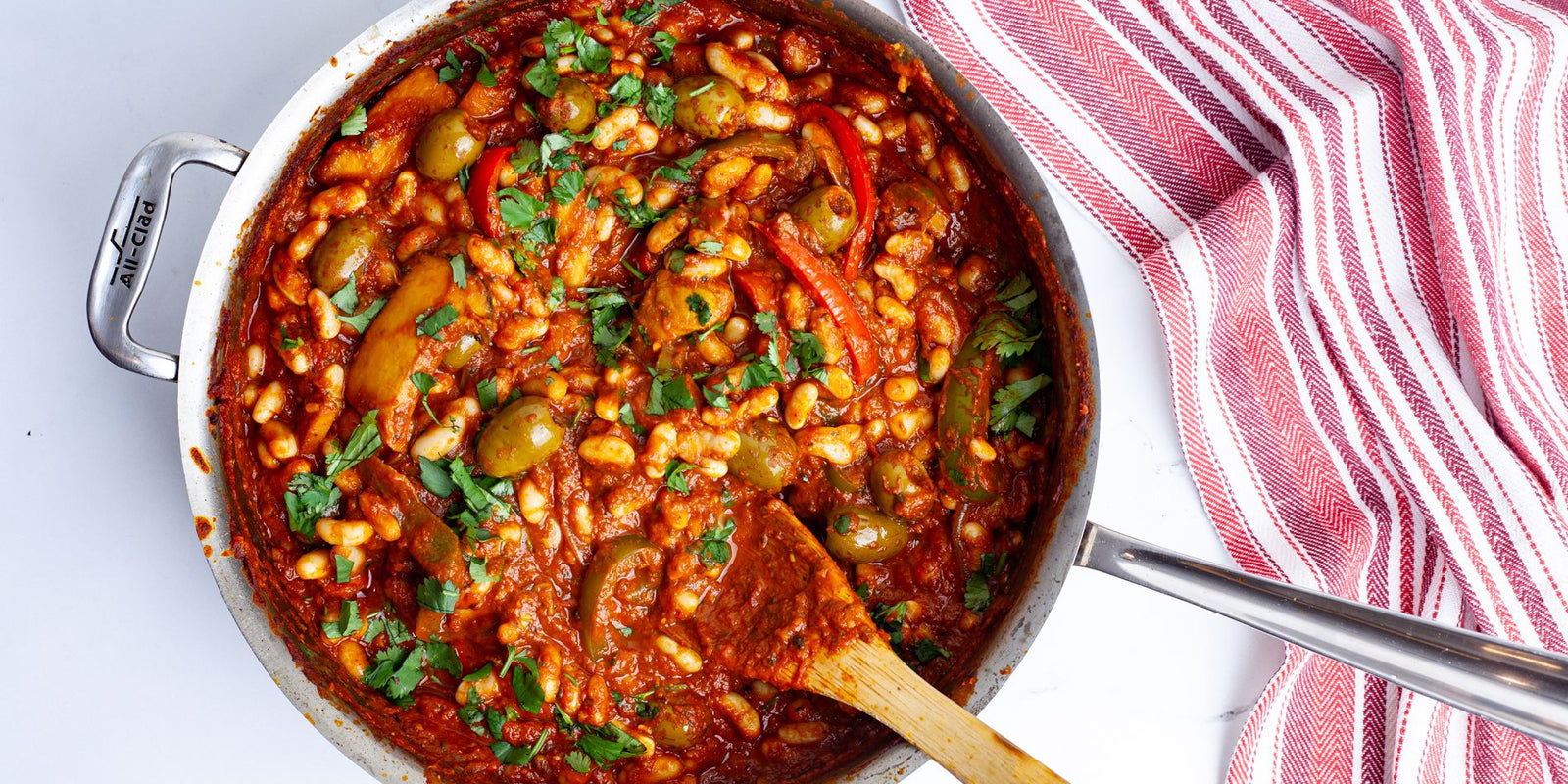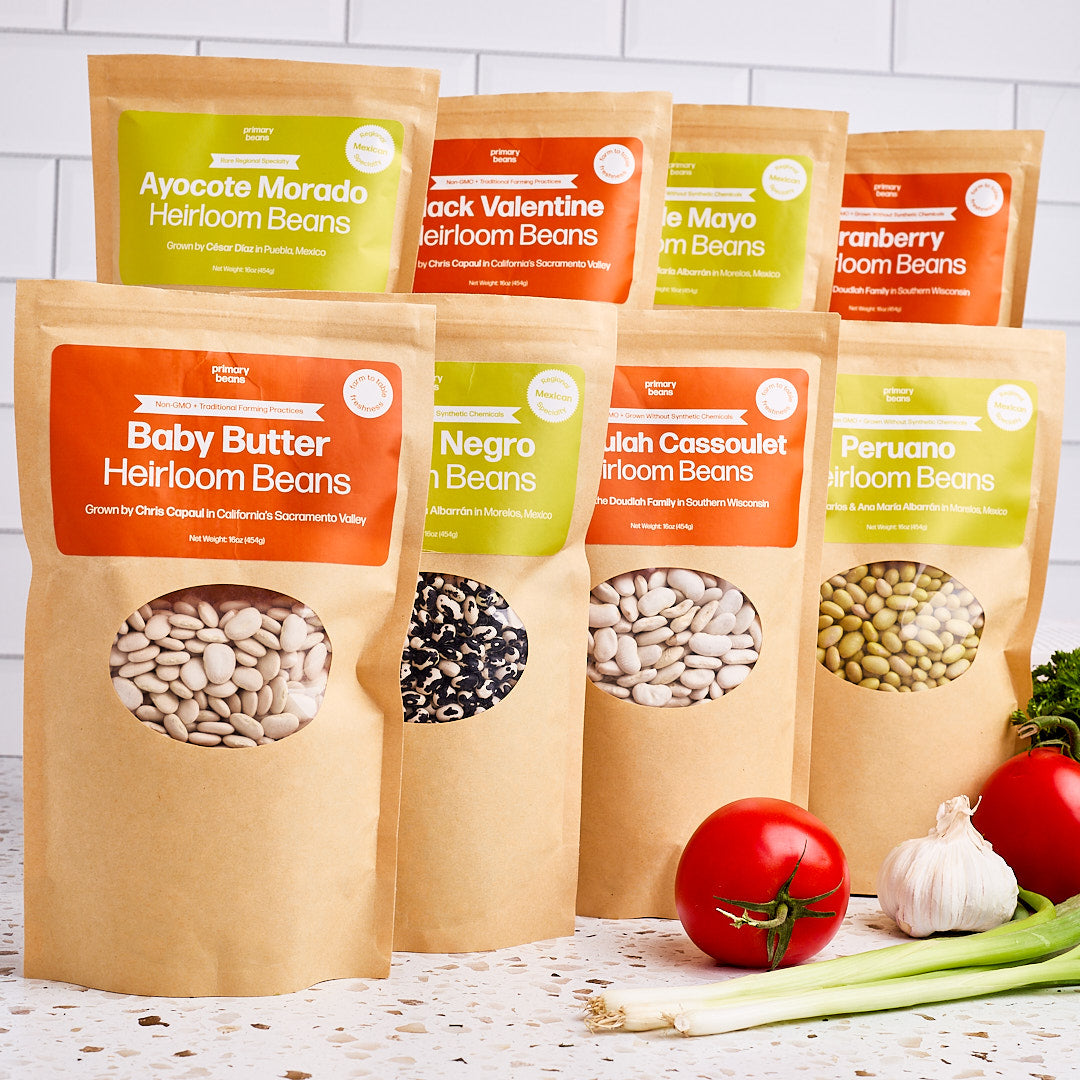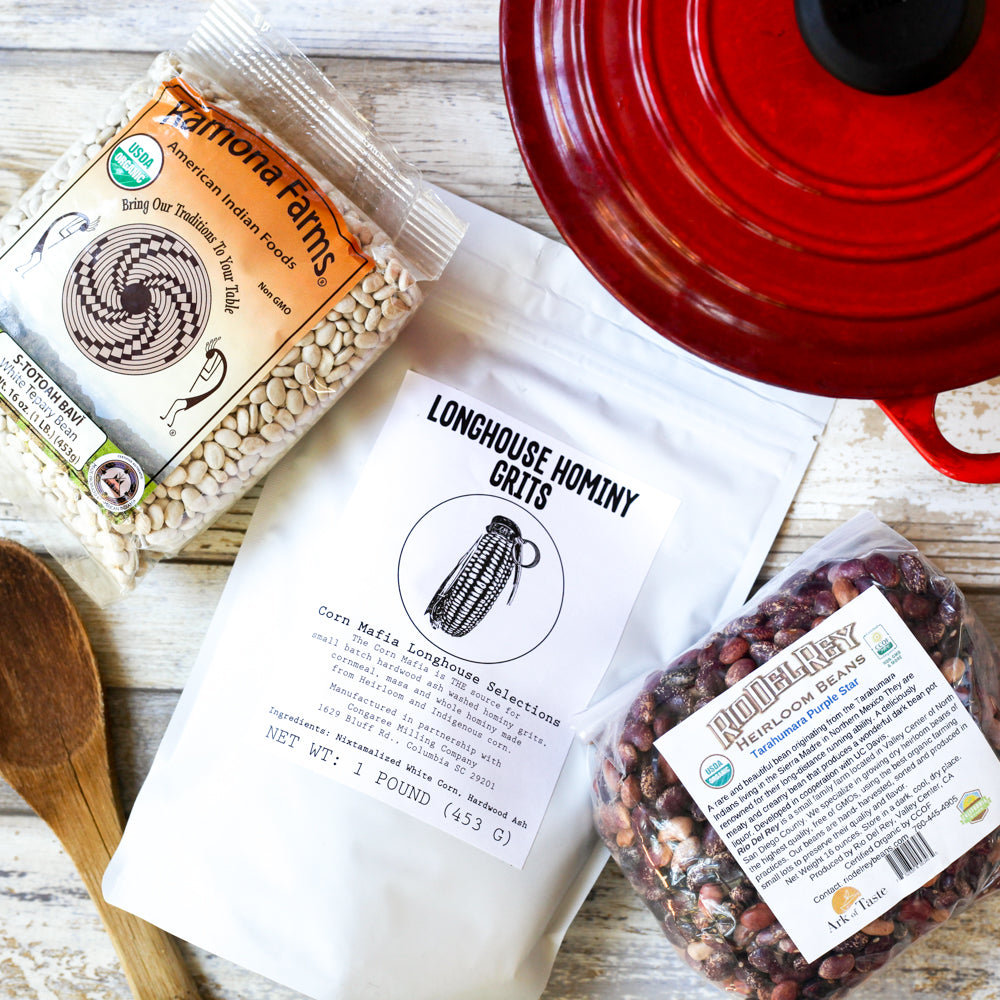10.99 FLAT RATE SHIPPING
10.99 FLAT RATE SHIPPING
SHOP

Frijoles Guitado
December 20, 2023 2 min read
This is my beany riff on Pollo Guitado, a beloved chicken dish from Puerto Rico and the Dominican Republic. This thick tomato stew gets its signature Puerto Rican flavor from Adobo and Sazon. Serve this warm and comforting dish on a bed of fluffy white rice. Carolina Gold Rice or Charleston Gold Rice are perfect compliments to the bright and spicy flavor of the stew.
What Are Adobo and Sazon?
Adobo and Sazón, a key components of Puerto Rican cuisine. They embody identity, history, and comfort. Everyone has their version of these spices but we have fallen in love with the spice collaboration between Burlap & Barrel and Illyanna Maisonet, renowned Puerto Rican food writer. She worked closely with Burlap & Barrel to create these personal and deeply flavorful blends. Rooted in family recipes, both blends showcase versatility and authenticity, promising to elevate your culinary experience.
Don't Skip the Caribbean Bay Leaf & Kombu
Pollo Guitado involves marinating the chicken in spices that bring flavor to the stew. To bring that much flavor to the dish we need to do the same for our beans. Heirloom beans bring a lot of flavor to the party but we're taking that up a few notches by using a Caribbean Bay Leaf instead of a typical bay leaf in the pot. Using Whole Leaf Kombu is a total ninja trick that amplifies all of the flavors, provides enzymes that help you digest the beans and brings umami to the party. Umami is often described as the fifth taste sensation, characterized by a savory, rich, and lingering flavor that enhances and balances the overall taste profile of a dish.
Cooking Beans In Acid
Salt makes beans absorb moisture more evenly, helping them to that silky texture we want. Acid does the opposite. Acid will cause your beans to stay hard. So as much as it is tempting to make this a one-pot dish, it’s very important to cook the beans separately and add them at the end. Even the brief dousing in tomato sauce will cause the beans to become more firm so they provide texture to the dish.
FRIJOLES GUITADO
Rated 5.0 stars by 1 users
Category
Main Course
Cuisine
Puerto Rican
Servings
4
This is my beany riff on Pollo Guitado, a beloved chicken dish from Puerto Rico and the Dominican Republic. This thick tomato stew gets its signature Puerto Rican flavor from Adobo and Sazon. Serve this warm and comforting dish on a bed of fluffy white rice. Carolina Gold Rice or Charleston Gold Rice are perfect compliments to the bright and spicy flavor of the stew.
Lisa Riznikove

Ingredients
- 1 Cup Dry Peruviana or Alubia Beans
-
1 - 4 inch Strip of Kombu
- 1 Teaspoon Salt
-
1 Teaspoon Sazon
-
1 Dried Whole Yuacalica Pepper (optional for an extra kick of heat)
- 1/2 Green Bell Pepper
- 1/2 Red Bell Pepper
- 1/2 Small Onion
- 4 Large Cloves Of Garlic
- Olive Oil
- 1 Tablespoon Tomato Paste
-
1 Teaspoon Sazon
- 2 Peeled Plumb Tomatoes Diced
- 1/2 Bunch Cilantro (leaves and tender stems finely diced)
- 1 Tablespoon Olive Oil
-
1 Teaspoon Smoked Paprika
-
1 Tablespoon Sazon
-
1 Tablespoon Adobo
- 1 Teaspoon Cumin
-
1/2 teaspoon Calabrian Chili Flakes
- 1 Teaspoon Kosher Salt
- 1/2 Green Bell Pepper sliced into strips seeds and veins removed
- 1/2 Red Bell Pepper sliced into strips seeds and veins removed
- 1/2 Small Onion sliced into strips
- 1 8 oz Jar Of Tomato Sauce
- Sofrito
- 1 /2 cup Pitted Green Olives
- 2 Tablespoons Olive Brine
- Juice of 1/2 Lime
- Cilantro to garnish
-
Serve With Carolina Gold Rice or Charleston Gold Rice
BEANS
SOFRITO
THE STEW
Directions
MAKE THE SOFRITO
Pulse the peppers, onion, and garlic in a food processor until well blended but not a puree.
- Heat the mixture in a pan over medium heat for 2-3 minutes. Add the sazon, tomato paste, plumb tomatoes, and cilantro.
- Cook the mixture for 10-15 minutes until it becomes a thick paste. This can be made up to 2 weeks ahead and refrigerated in an airtight container. (Make extra to add to other meals throughout the week).
COOK THE BEANS
Cook the beans on the stovetop or pressure cooker with the Caribbean bay leaf, kombu, salt sazon, and a dried pepper (if you are using it) until the beans are fully cooked and soft and creamy but not falling apart. If the beans are done before the stew allow them to rest in the warm water. These can also be made ahead and refrigerated for 4-5 days. If you make them ahead re-warm them separately before adding to the stew in the last step.
MAKE THE STEW
Heat the spices in olive oil over medium heat for a minute until they are fragrant. Add the peppers and onion and sauté until softened. Add the tomato sauce, sofrito, olives and brine. Cook for 20 minutes until the flavors have developed and the sauce has somewhat thickened. Add the lime juice and taste. Adjust seasoning.
ADD BEANS AND GARNISH
If the sauce is too thick add a bit of the bean liquid. You want the texture of a thick soup so that it soaks into the rice. Discard the Kombu, pepper, and Caribbean bay leaf. Strain the beans but don’t rinse. Add the beans to the stew. Garnish with more chopped cilantro. Serve with Carolina or Charleston Gold Rice.
Recent Articles
About Us
Foodocracy is dedicated to creating a more sustainable and independent food system. We support small, independent farms across the nation.
Related Recipes
Get impossible to find beans and grains shipped direct to your doorstep each month from small family farms.
We support small, family owned farms across the nation. Did you know that farmers only make an average of 10 cents on every dollar you spend at the supermarket? Working directly with farms and not middle men ensures that more money goes back to the people actually growning your food.
Get 10% Off
Sign up for delicious recipes and special offers.
**Regularly priced items only.







